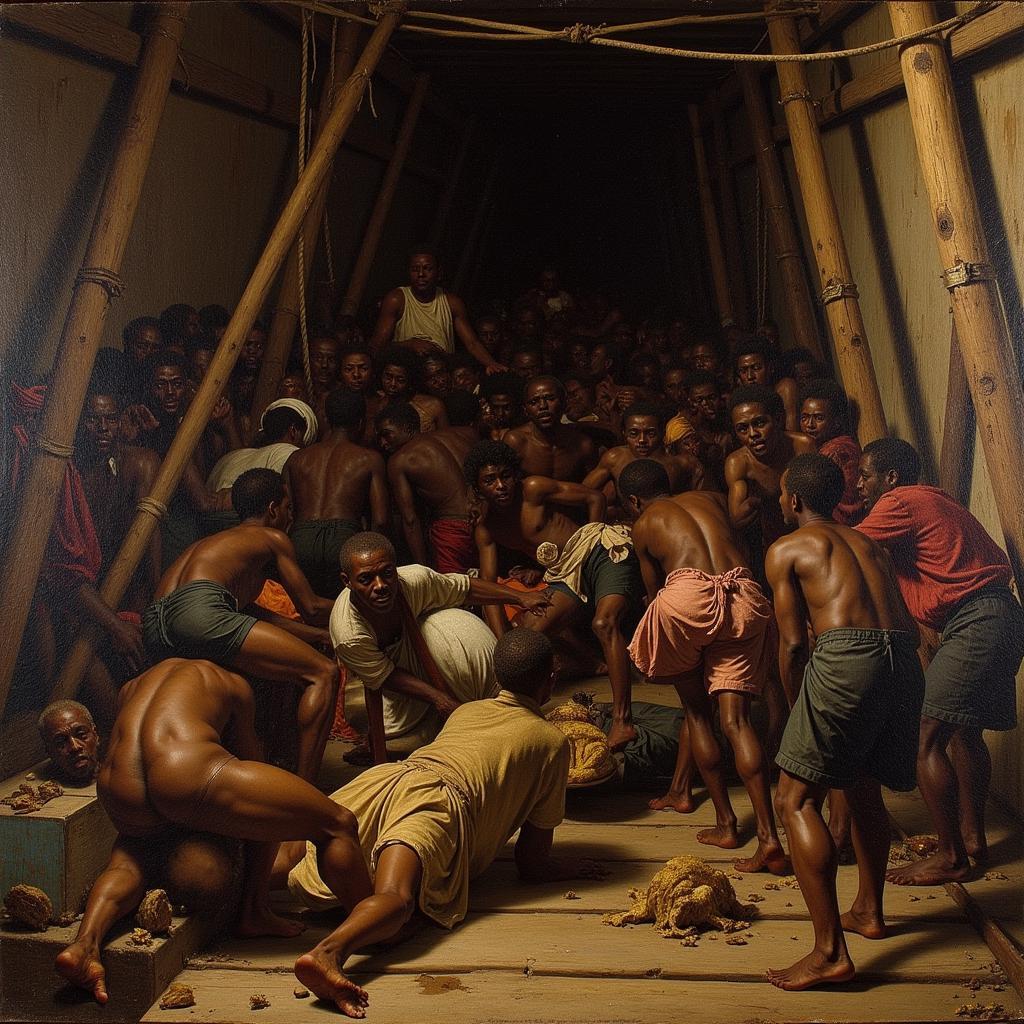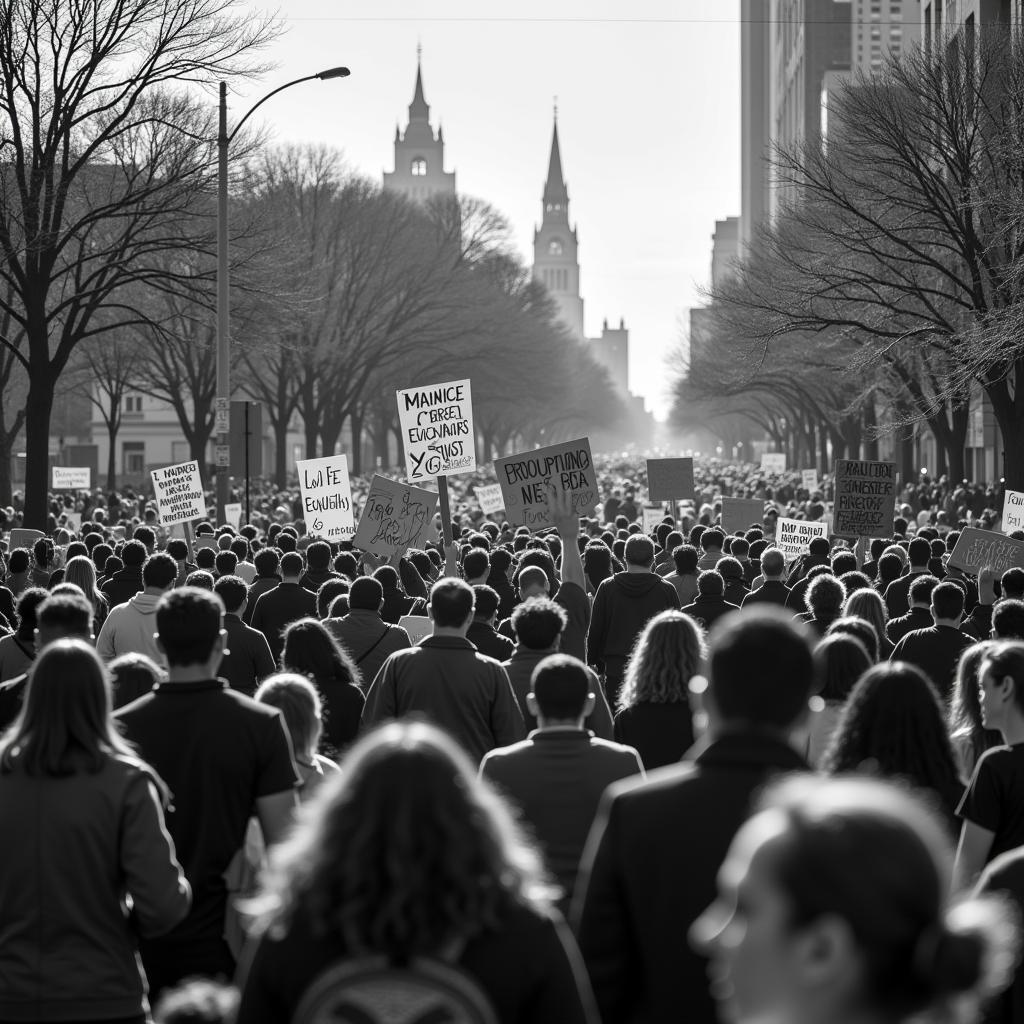African American Slavery in the US: A Deep Dive into a Dark Past
African American Slavery In The Us represents a brutal and defining chapter in American history. From the first forced arrival of enslaved Africans in 1619 to the Emancipation Proclamation in 1863, this horrific institution shaped the social, political, and economic landscape of the nation. Understanding this period is crucial to comprehending the complexities of present-day America.
The Origins and Expansion of African American Slavery
The transatlantic slave trade forcibly uprooted millions of Africans from their homelands and transported them to the Americas, including what would become the United States. Initially, indentured servitude was common, but the system gradually morphed into chattel slavery, where enslaved people were legally considered property. The demand for labor in the burgeoning agricultural economy, especially cotton plantations in the South, fueled the rapid expansion of this inhumane practice.  Depiction of overcrowded slave ships during the transatlantic slave trade
Depiction of overcrowded slave ships during the transatlantic slave trade
The growth of slavery became deeply intertwined with the economic prosperity of the southern states. This dependence on enslaved labor led to the development of a distinct Southern culture and identity, one that fiercely defended the institution of slavery. Laws were enacted to codify and control every aspect of the lives of enslaved people, stripping them of their basic human rights and freedoms.
The Brutality and Resistance of African American Slavery
Life under slavery was marked by unimaginable hardship, violence, and dehumanization. Enslaved people were subjected to forced labor, physical and sexual abuse, and the constant threat of family separation. Despite these horrific conditions, enslaved Africans and their descendants maintained a strong sense of community, culture, and spiritual resilience. african american spiritual quotes provided solace and strength during these trying times.
They resisted slavery in various ways, from subtle acts of defiance, like slowing down work or breaking tools, to more overt forms of resistance, including running away and participating in uprisings. Figures like Nat Turner and Harriet Tubman became symbols of hope and freedom, inspiring countless others to fight for their liberation.
The Road to Emancipation and the Legacy of Slavery
The abolitionist movement, fueled by moral outrage and a commitment to human rights, gained momentum throughout the 19th century. african american groups civil rights played a significant role in advocating for the end of slavery. The issue of slavery ultimately became a central point of contention between the North and South, culminating in the American Civil War.
The Emancipation Proclamation in 1863 declared the freedom of enslaved people in Confederate-held territories, marking a turning point in the fight against slavery. However, the struggle for true equality and justice continued long after the Civil War ended.
The Aftermath: Reconstruction and the Ongoing Fight for Civil Rights
The period of Reconstruction following the Civil War aimed to rebuild the South and integrate formerly enslaved people into society. However, this period was also marked by intense racial tension, violence, and the rise of discriminatory practices like Jim Crow laws, which effectively maintained a system of racial segregation and oppression. The legacy of slavery continued to cast a long shadow over American society, impacting everything from economic opportunities to political representation. african american civil war memorial stands as a reminder of the sacrifices made during this tumultuous period.
Dr. Aisha Kenyatta, a prominent historian specializing in African American history, notes, “The fight for civil rights in the 20th century was a direct continuation of the struggle against slavery. The injustices faced by African Americans during this era were deeply rooted in the legacy of slavery and its aftermath.”
The Civil Rights Movement of the mid-20th century, with leaders like Martin Luther King Jr., brought about significant legal and social changes, challenging segregation and discrimination. african american affirmative action emerged as a policy designed to address historical disadvantages. Even today, the struggle for racial justice continues, as the nation grapples with the persistent effects of systemic racism and inequality.  A photograph of a civil rights march
A photograph of a civil rights march
Professor Kwame Nkruma, a leading sociologist, adds, “Understanding African American slavery is not just about looking back at the past, but about understanding the present. The echoes of slavery continue to resonate in our society, shaping the inequalities and injustices we see today.”
Conclusion
African American slavery in the US remains a profound and troubling chapter in human history. Understanding its origins, its brutality, and its enduring legacy is essential for confronting the challenges of racial injustice and inequality that persist today. By acknowledging the full scope of this historical tragedy, we can work towards a more just and equitable future for all.
FAQ:
- When did the first enslaved Africans arrive in the US? (1619)
- What was the Emancipation Proclamation? (A document that declared enslaved people in Confederate-held territories free)
- What were Jim Crow laws? (Laws enforcing racial segregation in the South)
- Who was Harriet Tubman? (A prominent abolitionist and conductor on the Underground Railroad)
- What was the Civil Rights Movement? (A movement in the mid-20th century fighting for equal rights for African Americans)
- What is the legacy of slavery in the US? (Systemic racism and inequality that continue to affect American society)
- What are some african american instrumentalists? (Many influential musicians across various genres)
Need support? Contact us 24/7 at +255768904061, kaka.mag@gmail.com, or visit us at Mbarali DC Mawindi, Kangaga, Tanzania.